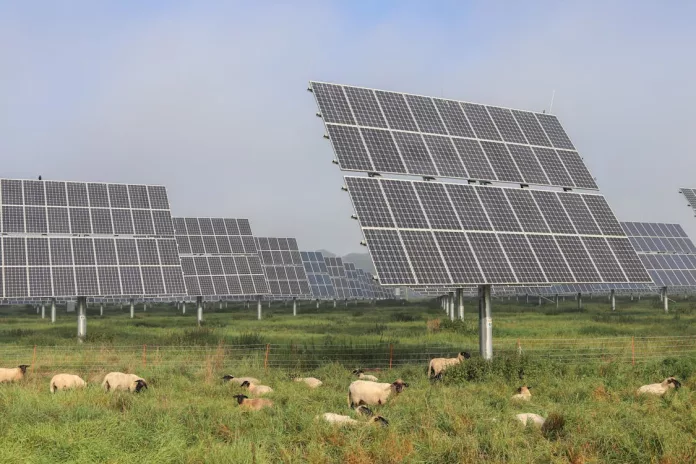A transformative wave is rippling through global agriculture. Agrivoltaic technology is on the verge of changing the landscape of farming by masterfully combining photovoltaic energy generation with traditional agricultural practices including livestock grazing, cultivation of food crops, and support of pollinator habitats. This burgeoning sector holds the promise of more sustainable and multifunctional use of land resources in line with modern farming trends.
Scaling Up Agrivoltaics with Corporate Endorsement
Once a niche experimental concept, agrivoltaics is now experiencing an explosive growth, partly fueled by corporate investment and recognition of its potential to assuage public concerns about rural solar developments. While agriculture today already involves heavy machinery and chemical usage, the integration of solar panels isn’t as incongruous as some might suggest. Detractors argue that land should be preserved for traditional farming, yet the very premise of agrivoltaics exemplifies harmonious energy generation amidst agricultural activity, providing a compelling counterargument.
Major Agrivoltaic Endeavors and Community Impact
Among the trailblazers is the looming Oak Run Solar Project by Shell in Ohio, led by Bill Gates’ Midwest Farms LLC. Despite facing local opposition, as is increasingly the norm, the plan was greenlit by state regulators. While not all land will harbor agrivoltaic systems, the project commits to substantial space for agricultural use, ensuring local ecosystem benefits.
Integrating Livestock, Crops, and Solar Energy
Agrivoltaics isn’t limited to new installations. Even existing solar farms can be retrofitted to accommodate crop cultivation or enhance pollinator habitats, transforming them into more eco-friendly and agriculturally productive sites. Researchers are developing methodologies and infrastructure to optimize these reconfigured spaces for plant growth without compromising solar efficiency, launching a new chapter in sustainable farming.
The Path Forward for Agrivoltaics
Despite these advancements, the full potential of agrivoltaics remains untapped. The U.S. Department of Energy, for example, is funding initiatives aimed at understanding and removing barriers to dual-use energy and agriculture projects. Organizations are also compiling resources and conducting studies to better inform stakeholders about the advantages and processes of implementing agrivoltaic systems.
Agriculture Under the Sun: The Economic Incentive
Increasing awareness of agrivoltaics presents a lucrative opportunity for farmers to reduce utility costs and generate additional income through land leases. Certain crops have been demonstrated to benefit from the peculiar light conditions created by solar panels, potentially boosting yield and water efficiency — an attractive proposition for any agricultural business.
Research and Regional Variations
Research institutions like the University of Illinois Urbana-Champaign are diligently studying the effectiveness of agrivoltaic models across diverse climate conditions. Their goal is to understand the intricacies of implementing these systems in various environments, thereby broadening the scope and appeal of agrivoltaics across the agricultural sector.

























